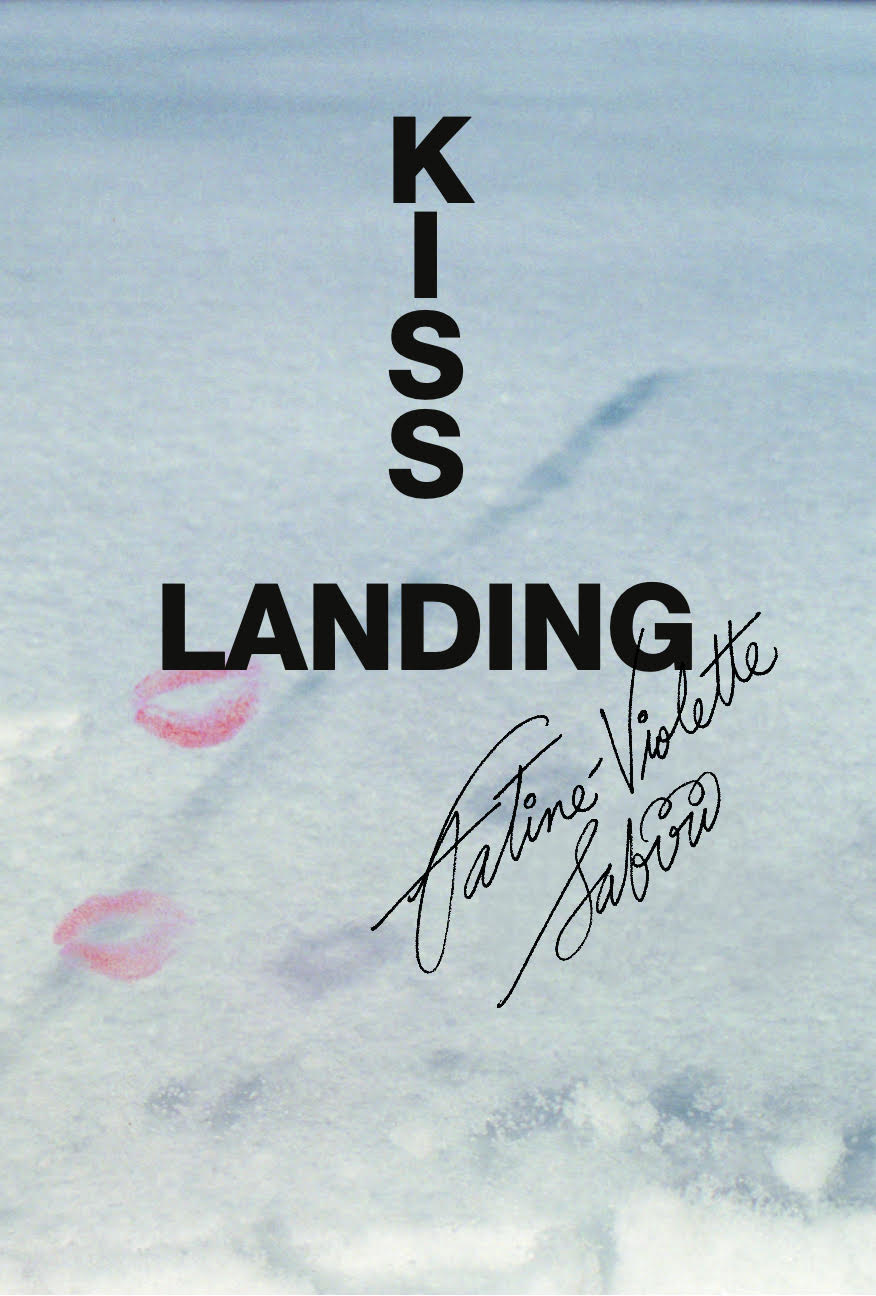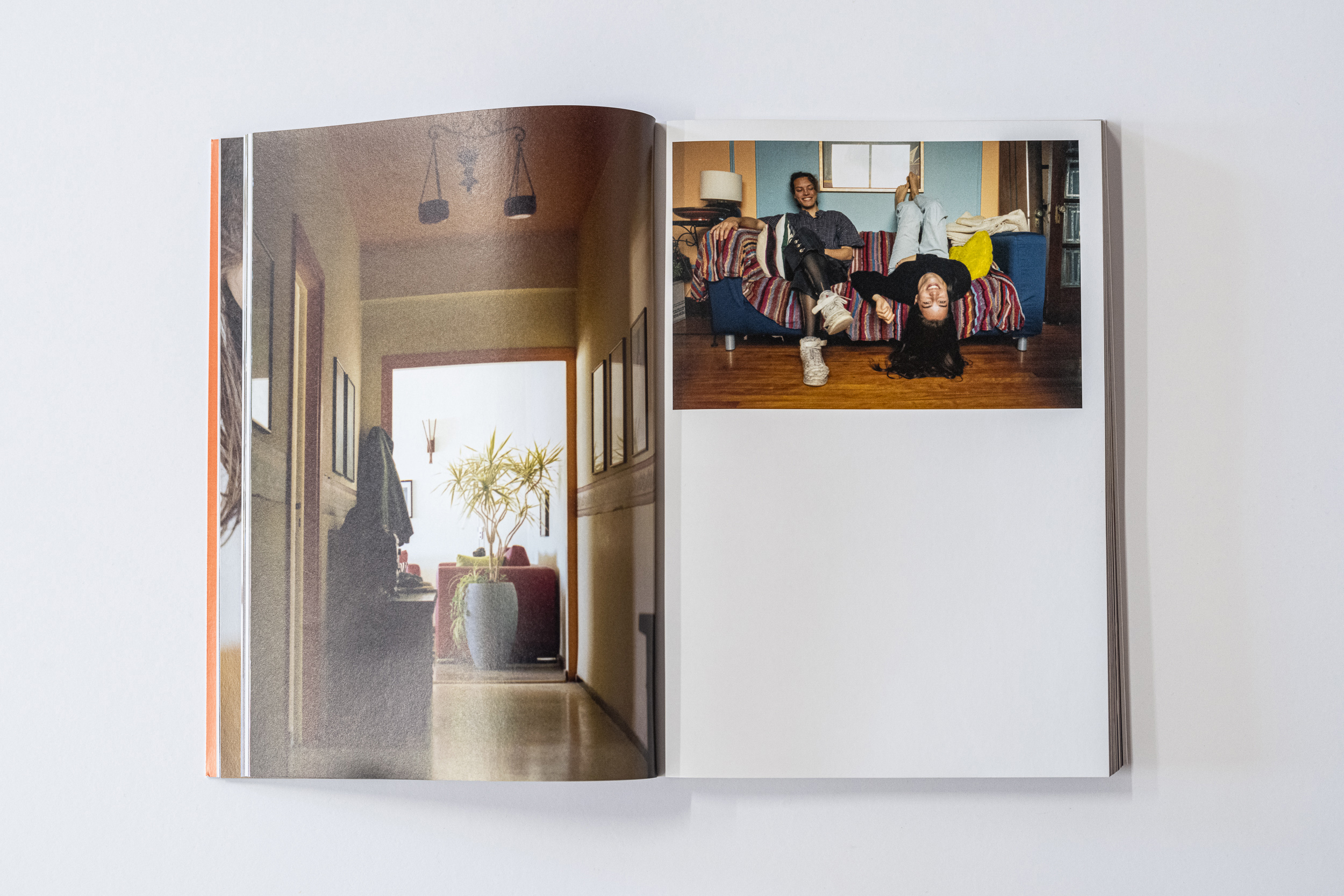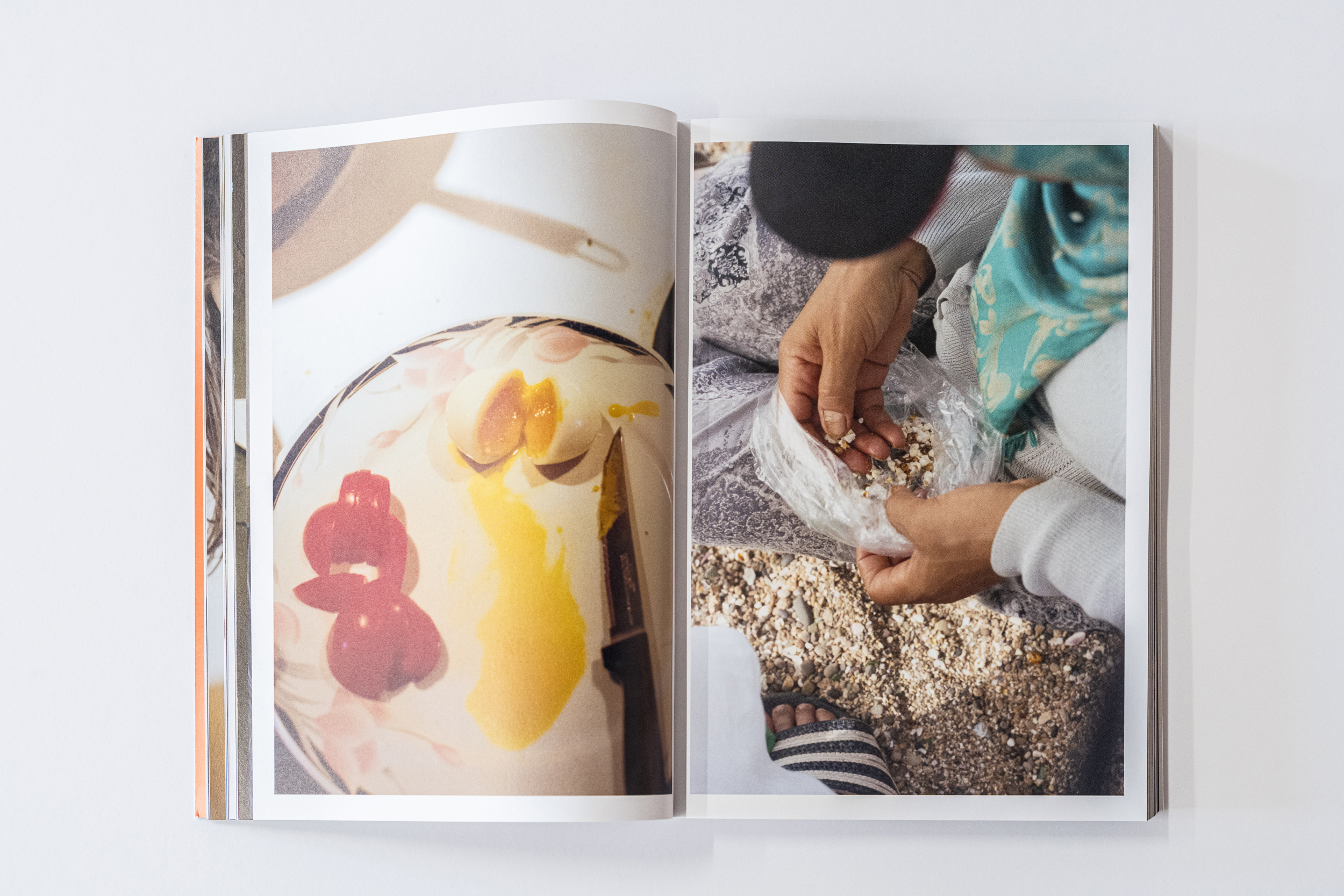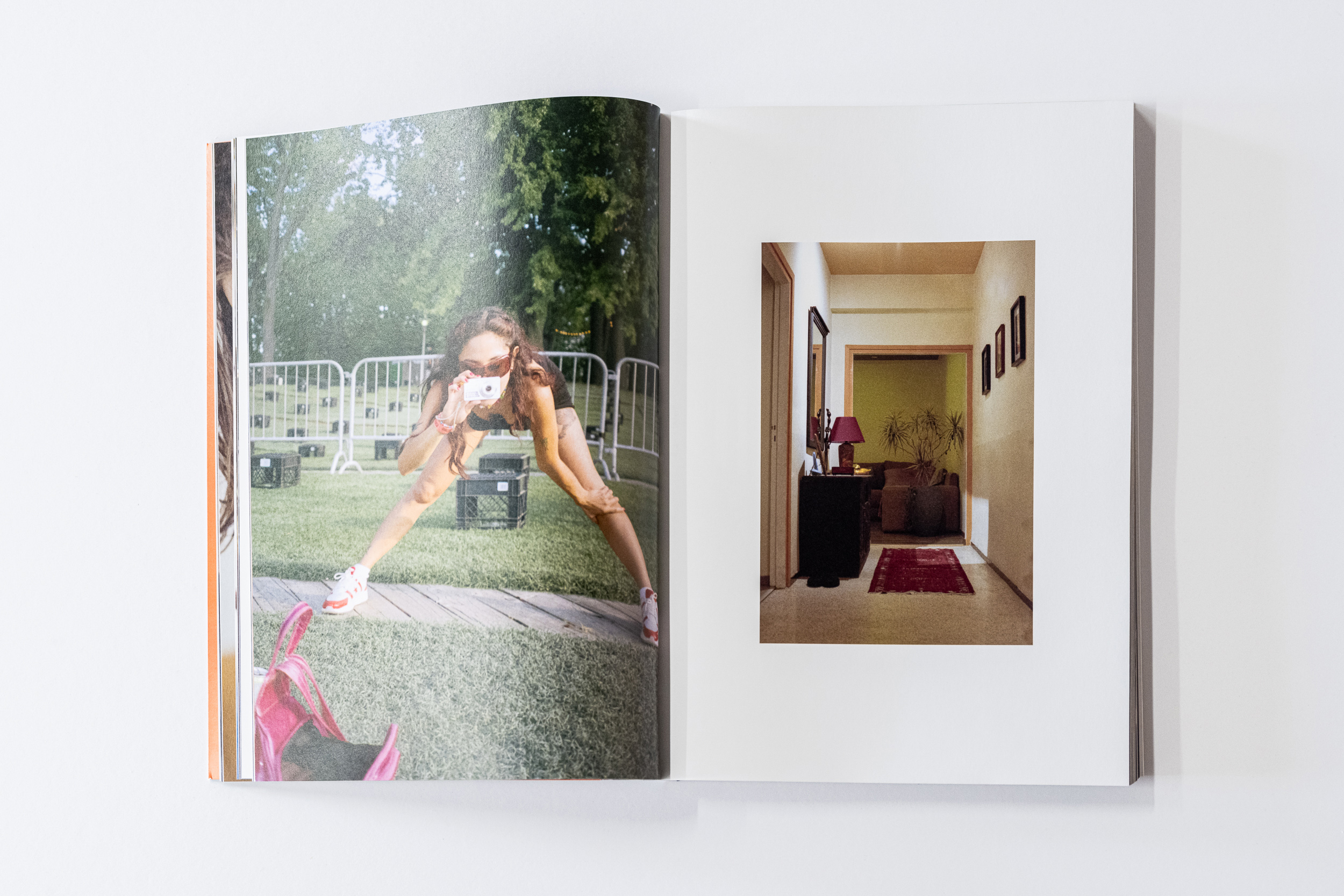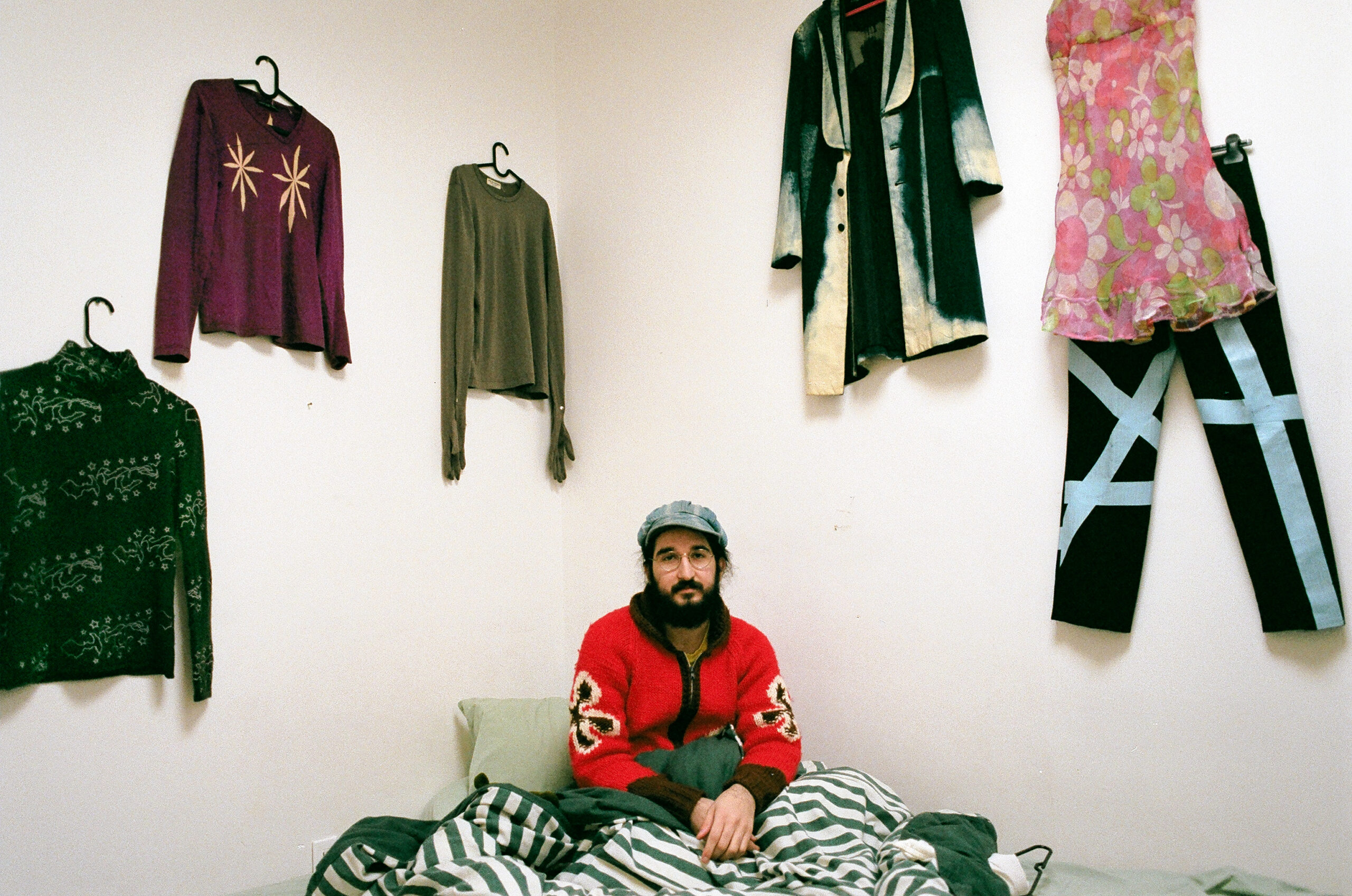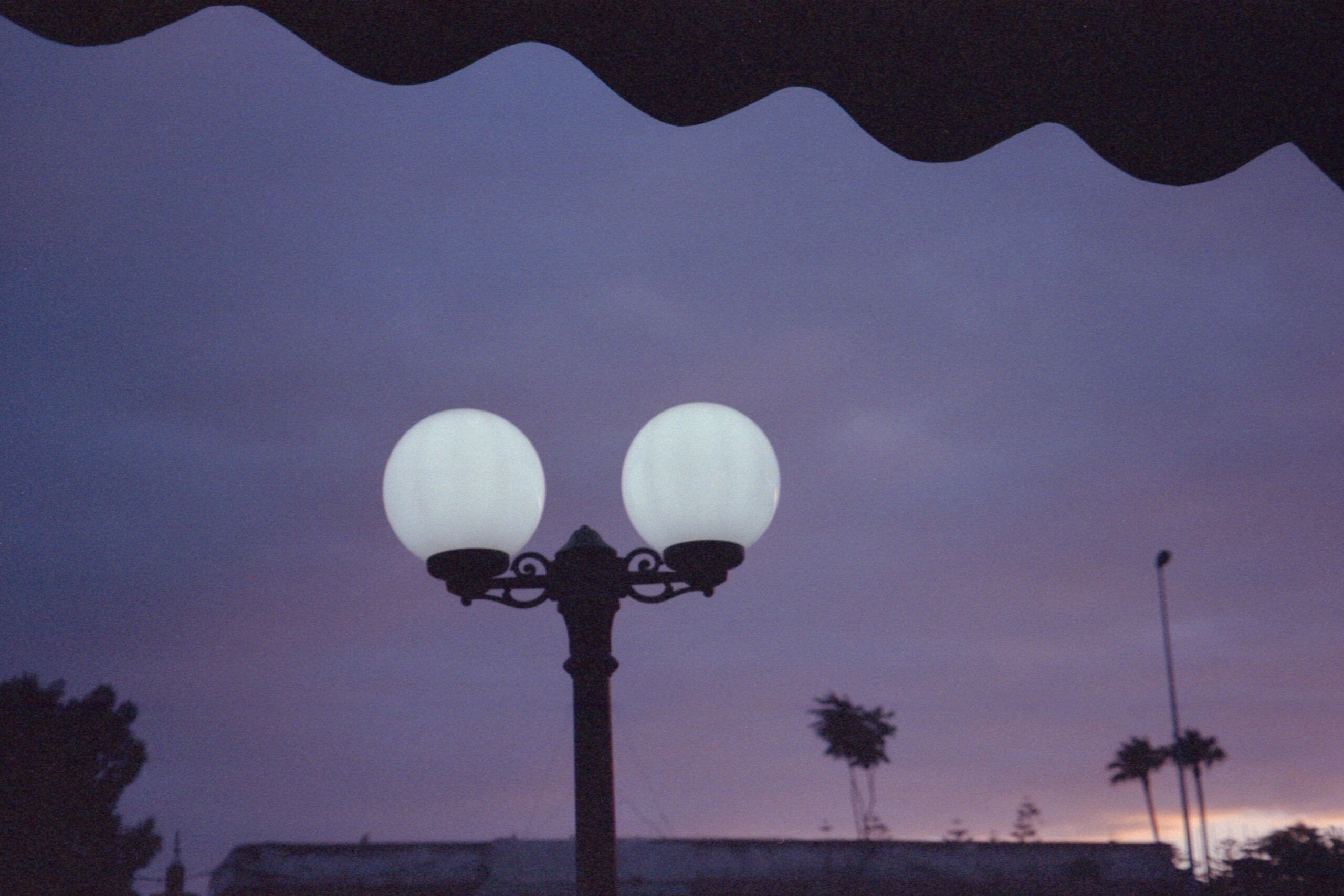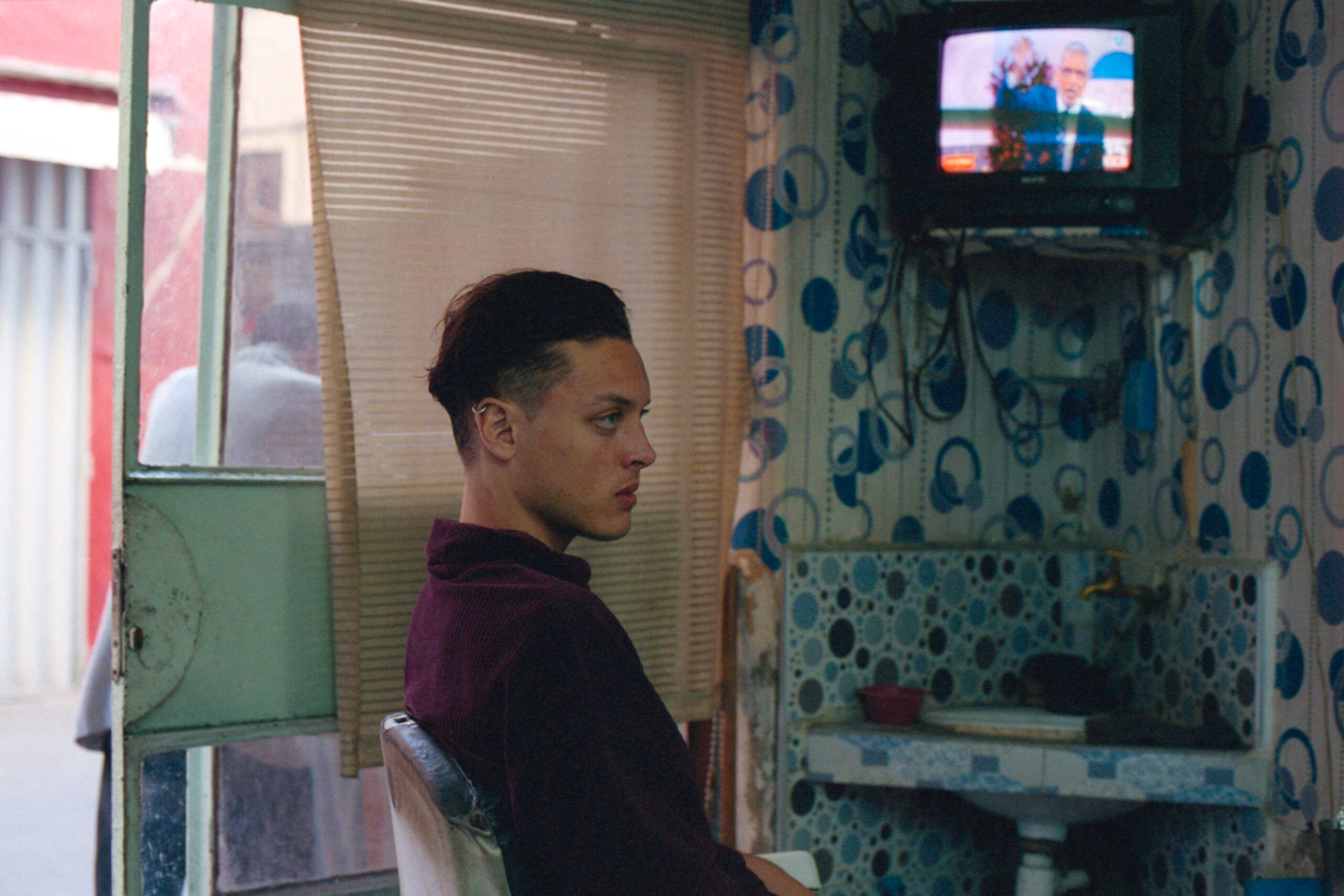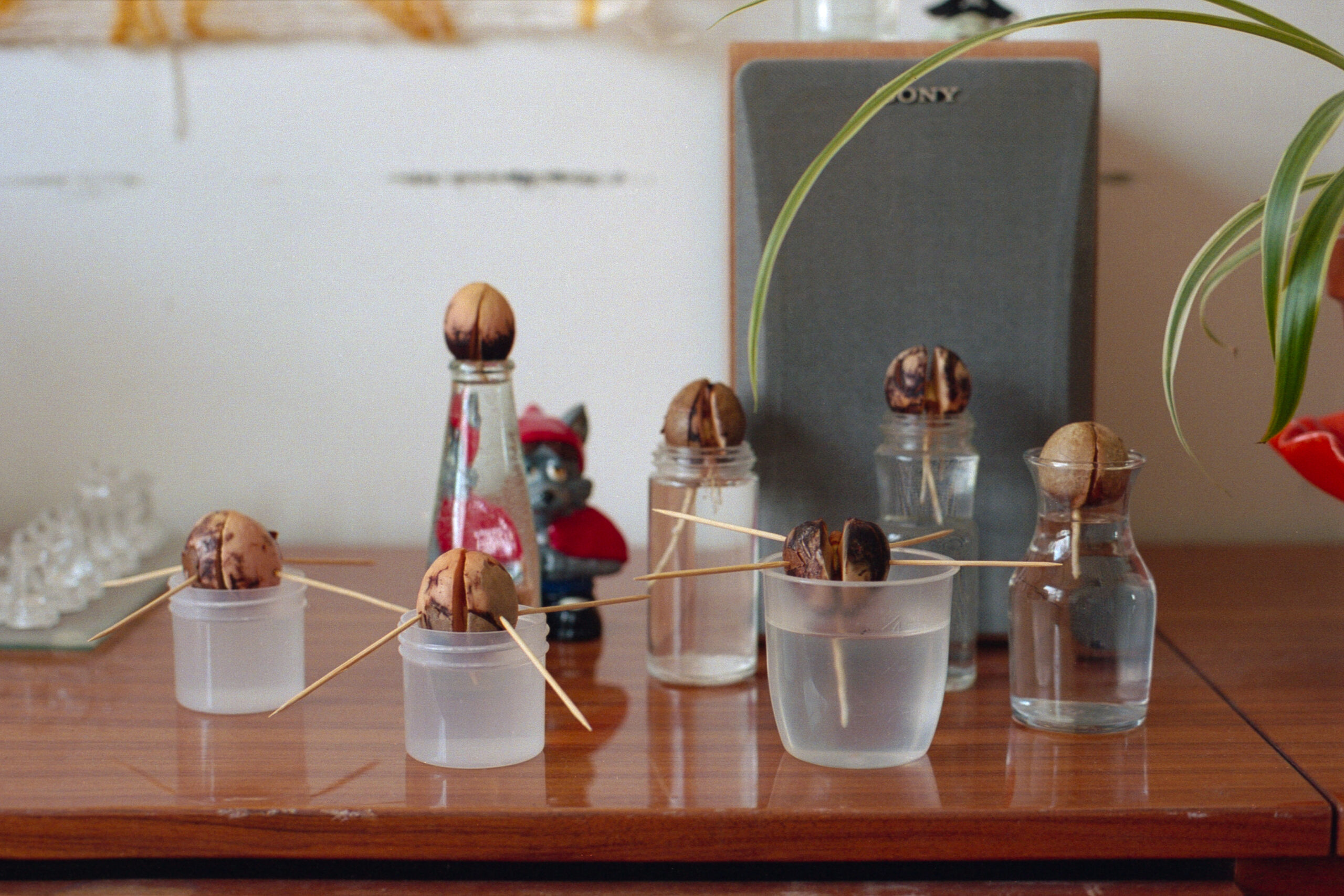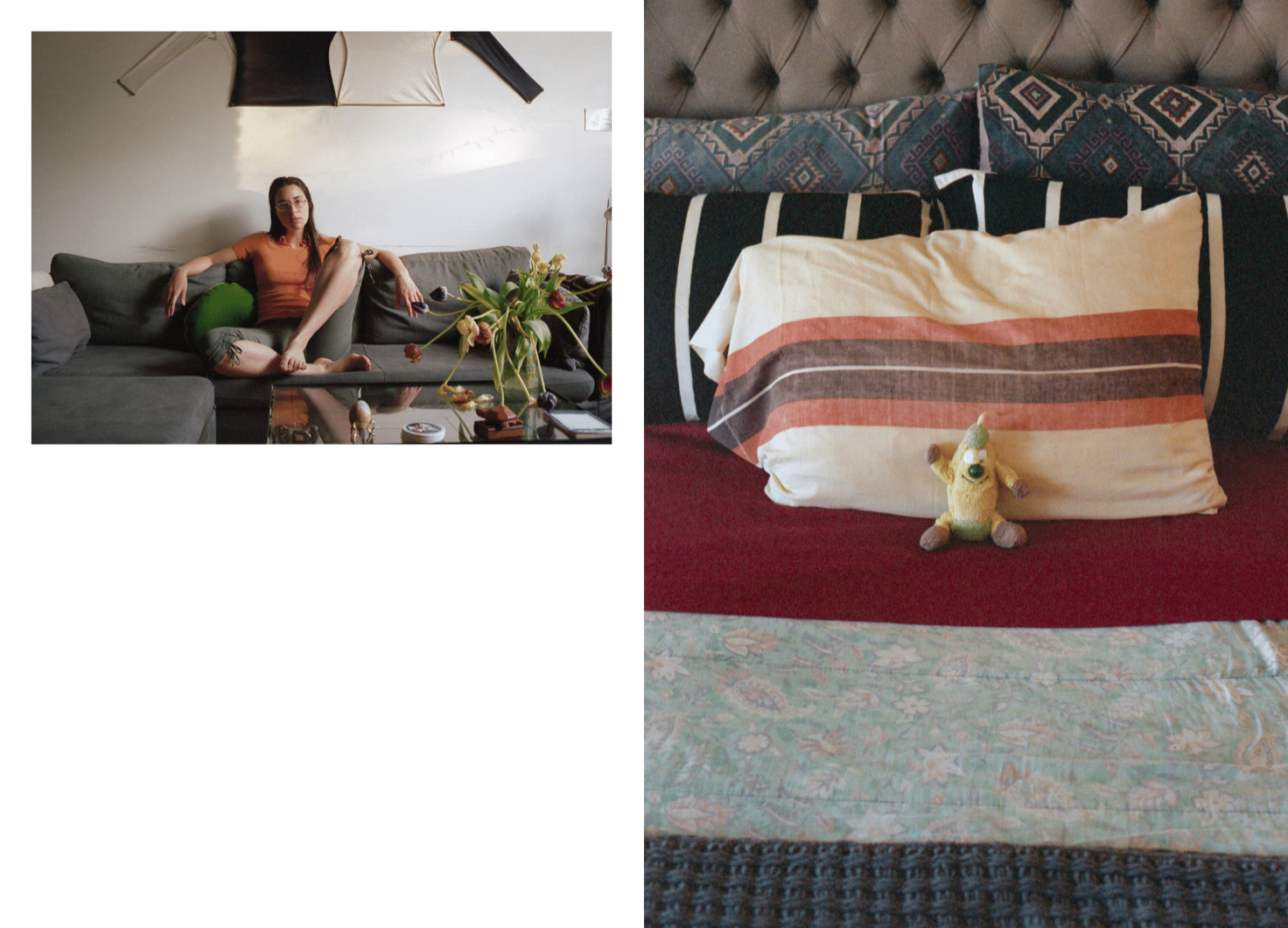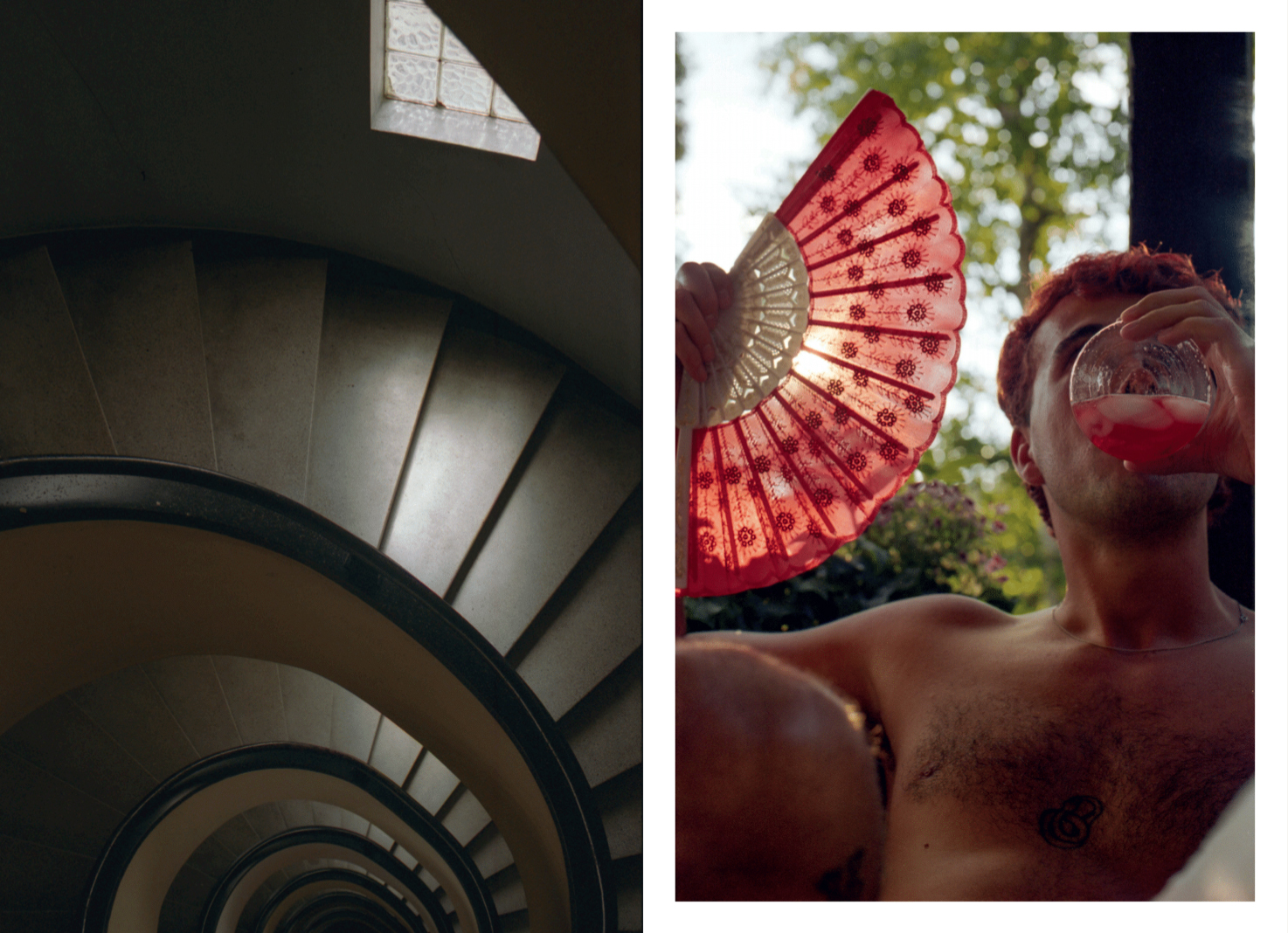[December 4, 2024]
Fatine-Violette Sabiri’s Kiss Landing, published by VU, brings together almost two hundred photographs taken in Casablanca, where Sabrini was born, and in Montreal, where she lives and works. Produced over a ten-year period, the images explore her sense of belonging and show her deep connection to both of these cities, between which she has been travelling since she was a child. Aiming her lens at her immediate environment, she brings to light how the two places, despite their geographic distance, have together formed a framework for her life.
In aviation, the expression “kiss landing” means a soft, almost imperceptible touchdown. Here, it refers to the comfort and familiarity that Sabriri feels for the places where she lands, and for the hospitality of her loved ones whose portraits – the book’s main genre – populate her works. These photographs, some seemingly been taken candidly and others posed, testify to the emotional ties central to Kiss Landing and, one might easily imagine, to Sabiri’s attachment to both Montreal and Casablanca. A private dimension predominates: the images immerse us in individuals’ personal spaces (bedrooms, and even beds, are regularly featured), and we can clearly envision the shared moments that form the context for the shots.
And so, an almost imperceptible touchdown. And in fact, in the book the boundaries aren’t always clear. In many images, we can’t discern a location from the visual information that they contain. The framing is often tight, the colours soft, the light and grain almost melancholy, giving the whole a strong feeling of coherence. In addition, the photographs, most of which occupy one or two full pages, are not captioned. We must flip to the end of the book to find the who is being portrayed and the place and date of each photograph: the back endpaper unfolds to three pages, revealing miniature reproductions of all the photographs in the book. A numbering system matches each to its caption on the back of the foldout. This overview, outside the usual book format, offers a different kind of understanding of the images: we can appreciate at a glance how the series unfolds and make connections among the images.
Photograph 72 is a particularly eloquent example of the blurring of boundaries that infuses the book. It takes up two pages and is therefore materially divided by the centre fold of the book. On the right-hand page, we see a sink under a turned-on television set in a corner the wall of which is covered with psychedelic wallpaper. On the left-hand page, a young man, seen in profile, is sitting in front of a window with a rolled-down blind. Because the book’s fold coincides with the division of the space in the image, it is not obvious, at first glance, whether this is a single photograph or two that go together particularly well, if these are one or two places, on one or two continents. Referring to the captions at the back of the book, we realize that this is one image and, above all, that it’s a portrait of the person who we saw as a young boy in the preceding photograph, taken some ten years earlier. Nounou’s face is one of the few that appear regularly throughout Kiss Landing. Sabiri has also had an exhibition (Khey, Galerie Pangée, fall 2024) devoted to her ties to this younger brother who grew up far away.
Photography works like a talisman to thwart distance. Rather than travel, Kiss Landing falls under the sign of a spatial distance, underpinned by numerous departures and discoveries, that necessarily influences and intensifies the gaze. Naturally, our attention is drawn to or pulled away from the familiar, in waves that endow the banal (a bed, a fruit basket, a meal, and so on) with grandeur and beauty. The proximity that forms the substance of the book responds to the geographic separation: through the intimacy of individual experience, invisible but real ties are woven between two cities, so much so that we find ourselves caught in the interstice of their embrace. Kiss Landing shows how life negotiates this envelopment through the places, people, and things that we wrap around us to make a world. Translated by Käthe Roth
Born in 1994, Fatine-Violette Sabiri is a graduate of Concordia University. In her practice, she uses photography, textiles, and traditional artisanal techniques from which she draws autobiography-tinged stories. Her work has been exhibited in Canada, Morocco, Czechia, and she is represented by Galerie Eli Kerr, from Montreal. elikerrhq.com/fatine-violette-sabiri-news
Fanny Bieth is an author and a doctoral student in art history, specializing in photographic studies, at UQAM. In her research, she looks at the relations between psychiatry and the media of photography and film. She is the publishing coordinator for the magazine Captures.

